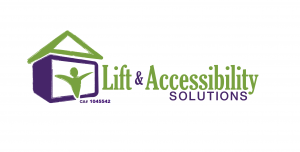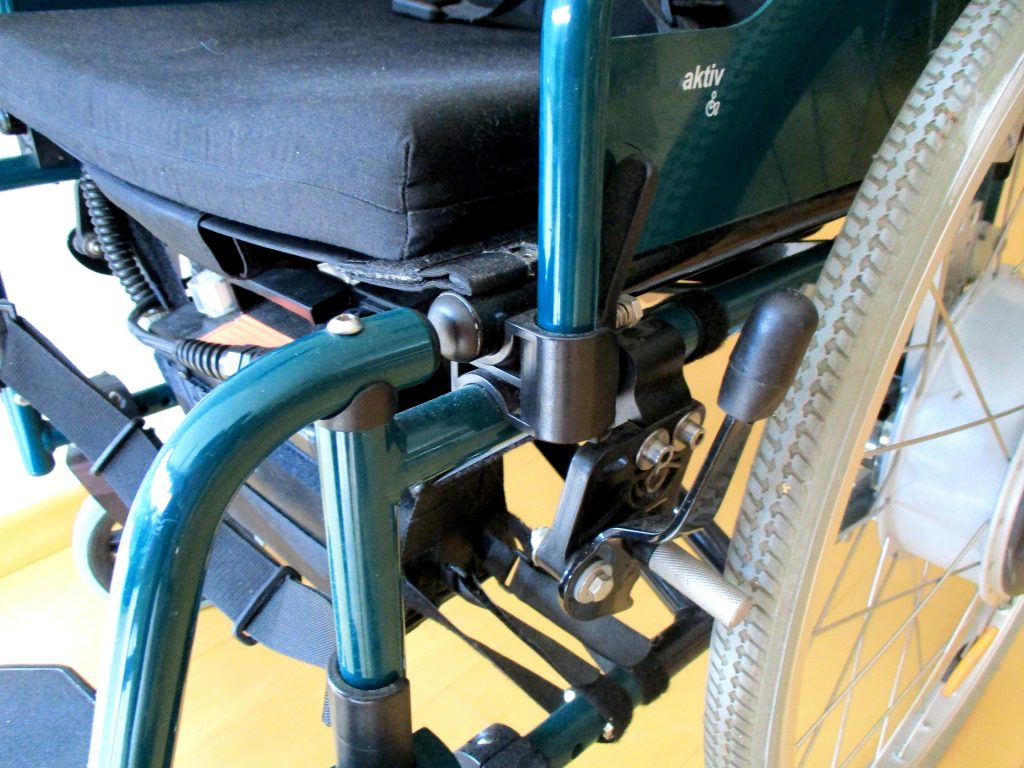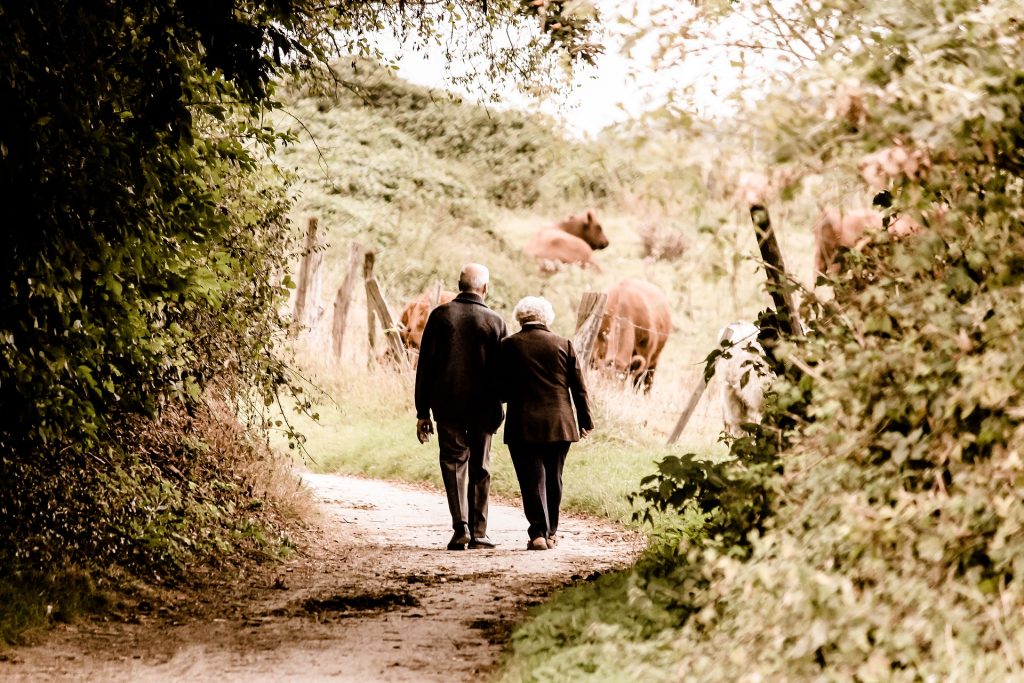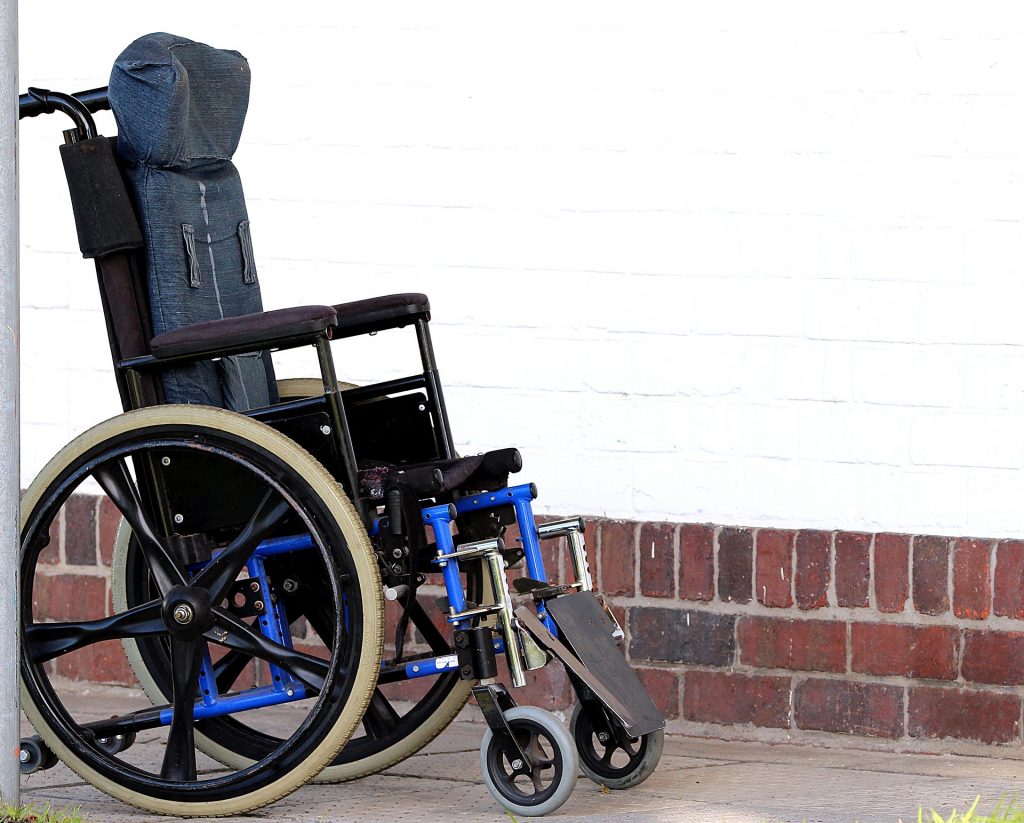Across our lifespan, we roll out the excuses not to exercise. We refute the research and claim we are the exception to the rules. As we age, the question becomes “Why bother at this point?” For the benefit of your health (or a senior loved one), let us clear up a few faulty statements about exercise and aging.
Physical Activity Proves Beneficial for Seniors – Exercise Myths Busted
It’s Too Late to Start Exercising at My Age
Beginning a fitness routine at any age offers benefits. The sedentary lifestyle which plagues the senior population raises the risk of cancer, coronary heart disease, depression and anxiety. Muscle integrity decreases, and the risk of injury increases. Plus, physical activity improves mental fitness.
Arthritis (or Osteoporosis) Limits My Ability to Exercise
On the contrary, chronic conditions, like arthritis and osteoporosis, benefit from physical activity. Exercise combats joint pain and fatigue by increasing muscle mass, bone strength and flexibility. While you need to adjust the type of activity you pursue, inactivity worsens symptoms. Furthermore, a sedentary lifestyle correlates with obesity, type 2 diabetes and cancer. Getting active reduces the prevalence of such conditions.
I Hate to Workout
Good news: Staying physically active does not require you to “workout”. It simply means you need to move. Finding activities which you enjoy reaps greater benefits than ones you dread. If you are social, try a group exercise class. For water lovers, swim at your local pool. If family is your passion, chase your grandchildren around the backyard. Walking the mall with friends, hiking a local park, gardening, dance and even sex count as exercise.
The Gym is Expensive (Besides, it is for the Young)
Just as you can choose a physical activity you enjoy, you must find a place you are comfortable getting fit. After all, if you never go, the gym does you no good.
Check out:
- Gyms with senior class offerings
- A Silver Sneakers program at your local YMCA or gym
- Quieter times of day to workout i.e. mid afternoon
- Classes modified for fitness level, disability or sensory loss
Senior living communities and services departments cater exercise programs to an older population, if you are still uncomfortable at the gym.
Exercise is Unsafe for Me
In addition to chronic conditions, the risk of falls, or the presence of Alzheimer’s disease or dementia keeps seniors from exercising out of concern for safety. However, physical activities decrease the risk of falls by increasing balance and coordination. And, they aid in sleep, cognitive function and appetite, while reducing agitation, memory loss and wandering in people with these conditions.
In short, stop believing the myths and get moving. Physical activity is beneficial for seniors.
It is never an easy day when you find out that one of your family members or loved ones has been involved in an accident or just received a life-changing medical diagnosis. Especially if that accident or medical incident is going to change their ability to live and work independently, so that they are going to need some kind of specialized help or assistance.
Today, we are going to be walking you through some things that you can start doing and some actions that you can start taking when you find out a loved one has been disabled.
Responding Accordingly and Compassionately to New Disabilities
1) Stay Positive
One of the best things that you can do when you first get word of the news of new disability is to stay positive. Being negative is not going to take you back in time and it is not going to solve your problems, so the best thing that you can do for yourself and your loved one is to stay optimistic. Positivity, encouragement and the strength of the people around them are going to be the best things for keeping their spirits lifted.
2) Stress Your Willingness to Help
When a medical or physical condition limits someone’s independence, they are going to need to rely on other people to help them accomplish daily tasks. These may be activities and responsibilities that they were used to doing on their own beforehand, which can be incredibly frustrating for them.
Make sure that you let them know that you are happy to help them. Take action and show them that you are more than happy to help them out with anything that they need. This can be a tough balance in the beginning to know when you are doing tto much, so make sure to keep a balance by asking if they need help.
3) Adjust their Living Area
Another great way that you can help your friend or family member with adjusting to their new disability is by making their home more convenient for their condition. Make sure that you rearrange important items like furniture so that they can move around their home with ease.
4) Add some Tools for Convenience
The chances are, you are going to need to start using tools and incorporating safety precautions and emergency protocols to make sure that they are taken care of.
Common options may include:
- Wheelchair lifts
- Grab bars
- Safety bars
- Safety ramps
- Stairlifts
- And emergency communication methods
If you have any other questions about handling new or rapidly declining disabilities, feel free to contact us today.
10 Feb / 2018
This Is How To Get Into Adaptive Running
Ah, the pleasures of recreational and competitive running! Don’t let a disability stop you from enjoying this invigorating sport. Running relieves stress, boosts confidence and relieves depression. If you’re a beginner in the adaptive running world, here is some advice to get started.
This Is How To Get Into Adaptive Running
The First Step
Work your way up to running. If you haven’t done any adaptive running before, start with a run/walk program – run two minutes, walk one minute and repeat. Rather than setting a goal to go a certain distance, set a goal to run for a certain time. Start with 10 minutes, then 15, then 30 and so on.
Running Right
It is really important to have proper form and good body balance. If you are running on a prosthetic limb that is not properly fitted or designed for running, it can create issues in other parts of your body, particularly your spine. It is crucial for the body to be properly aligned; if it’s not, you’ll hurt most of the time.
Joint range of motion in the hip is also very important. Ideally, you should have the same range in both hips. One hip locking up a bit will cause misalignment. Work with a trainer to do specific exercises to increase your range.
Commitment
All sports are half physical and half mental, and running is no different. Your head must be in the game, so to speak. If it isn’t, you won’t be successful. Discipline and commitment are key, but persistence is the most important. It will take a while to learn the skills of adaptive running, so hang in there. It will definitely pay off with the health benefits.
Adaptive Running Equipment
Adaptive running requires the proper equipment. Special sport or running prostheses can handle the extra loads and minimize wear and tear on your body. You can do adaptive running in a regular wheelchair, but a sports chair or racing chair might perhaps better suit you. There are several community organizations and national adaptive sports programs that will let you try out a chair.
Whatever you do, give adaptive running a try. You’ll feel better, you’ll be healthier and you’ll love getting out into the great outdoors.
22 Jan / 2018
Personal Elevator Benefits Pacifica, California
Hello, my name is Paul Harlin with Lift and Accessibility Solutions. I’m here to introduce you something newer to the U.S. market called a personal elevator. This happens to be a Wessex that comes out of England.
What makes something a personal elevator is the fact that it’s an elevator that doesn’t require a shaft. It’s allowing us to travel between two floors here at a home in Pacifica, California. While not happening to wall off the space permanently and either the room it’s up or down. So, as this elevator starts up and moves out of the downstairs level, you’re going to see that we can actually see the walls behind this space. And use the space, we could actually stand under that space. The volume of that air is available in the room. In a minute we’ll I’ll join you upstairs to show you what it looks like as it’s coming up.
Now we’re on the second floor of the elevator. Showing you what it looks like in the room as the elevators coming up. You can see pictures on the wall, you can see where the room had plenty of room in it. As the elevator is starting up, the elevator is going to come in and fill in a corner of the room. Allowing someone to bring a wheelchair, a scooter, maybe it’s just the suitcase that’s coming back from a trip. Coming up into that second level and just having free motion between two floors in a home. Once the elevators up we open the door and someone is able to exit.
Once that is complete if you want more room at this level you’re just going to send the elevator back down again. And, have the room to use how you would like.
If you have any questions about this that we could answer. Please feel free to contact us at the information below at the addresses below. My name is Paul Harlin with lift and Accessibility Solutions.
18 Jan / 2018
Extraordinary Pets with Extraordinary Owners
In a children’s hospital in Greenville, South Carolina, there’s a therapy dog, named Harley, who visits sick children in the hospital. Although this is a common practice for therapy dogs, this particular puppy is quite extraordinary because Harley is blind. Going room to room, this sweet doggy brings smiles and hope to children. Her success story fuels their successes. “If Harley can do it, I can do it!,” they say.
Hearing about the great good that this animal is doing in the lives of children prompted this question. “What if these extraordinary pets, like Harley, were matched with extraordinary owners; owners who had limitations themselves?” Would it make a difference for their pet? Would it affect the owner? Yes!
Here are 3 results that having a pet with disabilities can provide for both the pet and its owner!
Sense of Purpose
While most owners of blind dogs are googling “what to do with a blind dog”, Harley’s owner was looking into therapy training because she knew there was a greater purpose for her pup. You can do the same for your pet. Whether it’s bringing joy to children in a hospital room or learning to walk with only three limbs, focusing on the challenges the pet faces can provide a greater sense of purpose and some pretty incredible stories for both you and your pet.
Gratitude
According to an article by Huffington Post, helping others makes you thankful. Not all who face a disability can combat the emotional strain and setbacks that come with it. What if a woman who has been home-bound was paired with a cat who desperately needed sunshine and snuggles? Would this pairing change the outcome of this woman and her new pet? Yes.
This gratitude can extend beyond the pet and owner as well. This fish enamored the online community when his owner crafted him a wheelchair to help him float upright.
Longer Life
According to this article, helping others gives you longer life. It makes sense. Caring for another is life-giving. Not to mention pets needs plenty of exercise and sunshine which means you’re getting a healthy dose of vitamin D as well.
If you’ve been thinking about getting a pet, consider looking for one with a disability. You’ve already tackled the extraordinary for yourself. Now it’s time to pair up with an animal doing the same!
11 Jan / 2018
This Is How To Select The Best Wheelchair For You
Finding the right wheelchair is like finding the right type of tires for your jeep. There’s so much to consider. The size, the level of support, the tread, the look, the purpose and use. Off-road or highway? Snowy or muddy terrain? So many options!
Let us make the process of finding your next wheelchair a little less stressful with these simple tips!
The Options
There are so many options out there but only three types of wheelchairs: Manual, Scooters, and Power.
Manual wheelchairs are self propelled meaning they only move if you move them with your arms or someone pushes you. They are typically lightweight and smaller. Most fold up making car transport a simple step.
Scooters tend to be a little more aesthetically pleasing to the eye and a less expensive option. Unfortunately, they are a little more difficult to transport and do not provide proper back support.
Power wheelchairs are more expensive, heavier, and more difficult to transport. They are, however, powered, so there is no manual work required to make them move. Non-manual wheelchairs also come in standing varieties.
Here are few things to consider when deciding what wheelchair is best for you.
Do your research.
Look at reviews from those who have purchased the wheelchairs you are considering. This website lists their top five manual wheelchairs and gives great unbiased information on why they chose these particular models.
Seek out the advice of an occupational therapist.
Having someone in your corner who helps fit clients in wheelchairs for a living can be extremely helpful; just like having an expert at the tire store fit your jeep with snow tires.
Think through your needs and abilities.
Are you able to self propel a wheelchair? Do you have the space in your vehicle for a larger wheelchair or scooter? Would a motorized wheelchair increase your quality of life? We found this video quite helpful in breaking down all the details involved in fitting yourself for a good chair.
Know your budget.
Insurance will only cover so much. Determine what you can spend if what you want, or need, is not provided through your insurance.
Try before you buy.
Once you’ve narrowed it down, rent the prospective wheelchair. See if it’s right for you before you make the purchase. Your doctor can help you find a rental establishment.
Don’t be afraid to return it.
Your wheelchair affects your physical health and your emotional well being. It needs to be a great fit. Be sure to know the return policy for your wheelchair to save yourself some trouble!
Finding the right chair requires a lot of research and consideration. But we are confident you can find the right one for you and your needs!
03 Jan / 2018
Adaptive Skiing This Winter Season
Have you dreamed of a ski vacation this winter, but you need to find a destination that offers adaptive skiing? Don’t worry, you are in luck. Adaptive skiing is now offered more places. Let’s explore.
Where To Go?
There are over 65 resorts in the U.S and Canada that offer adaptive skiing and great ski runs for all abilities. From the Colorado Rockies to the mountains of New Hampshire, you’ll be able a great winter sports destination.
What Sports Are Offered?
Most destinations offer alpine skiing, Nordic skiing, and snowboarding for anyone with a physical, developmental or cognitive disability.
Lessons
Most resorts offer lessons so that people can learn the basics and become familiar with the adaptive equipment. Look for lessons offered by certified PSIA instructors from the Professional Ski Instructors Association. Many instructors for adaptive sports have backgrounds in medicine or physical therapy, so be sure to ask if you’d like to know more information about the instructors before you book your trip.
Many resorts offer week-long camps or clinics, which can be really fun. You can meet and learn with other people seeking adaptive sport opportunities. If you absolutely just love skiing, you can join an adaptive sports club and go to events and competitions. These clubs are a great way to meet up and compete with new friends.
Equipment
Bring the usual—gloves, hat, goggles, parka and ski pants, but you can get the rest of the gear once you get to the resort. Adaptive resorts have all the specialized gear you need. They offer monoskis and snowboards that are specially engineered to absorb the extra force and evenly distribute your weight on a sit-ski. Some resorts even offer a special track system that can be added to your wheelchair. It looks like the track on a tank and allows the wheelchair to navigate snowy terrain. It’s great—you can go explore the great outdoors. Most places do offer mono-skis, bi-skis, outriggers, sit-skis and ski-bikes, but call ahead. Some resorts don’t stock these devices but can arrange for them with enough advance notice. Also call ahead if you’d like special equipment. These resorts really strive to offer everyone the full ski experience, and are generally very accommodating.
It’s hard to find a more fun and exhilarating winter experience than adaptive snow sports. These ski runs are open to people with just about any disability, so what are you waiting for? Make that phone call!
08 Dec / 2017
How to Treat and Prevent Osteoporosis
Osteoporosis is a disease that reduces the density and quality of the bones. It develops over time and can eventually become quite debilitating. But, there is good news, if you have osteoporosis, there are treatments to lessen bone loss and decrease the risks of the disease. The better news is, if you take a few easy precautions, the condition is preventable altogether. Keep reading for helpful tips for treating this condition if you have it, and preventing it if you do not.
Preventing Osteoporosis
Preventing osteoporosis is easy. The key is to make a few lifestyle changes that will not only help to prevent this condition, but ultimately will help your overall health as well. To get you going on the path the healthy bones, try some of these ideas:
- Alter your diet
Preventing osteoporosis is all about strengthening your bones, which starts with the foods you feed your body. Increasing your lean protein intake is a great place to start. Also, add foods that are rich in vitamin D and calcium as well.
- Calcium
It is no secret that calcium is a key nutrient in healthy bones. Adults should aim to get about 1,000 mg of calcium every day. Postmenopausal women should increase it to 1,200 mg daily. It is best to get your calcium from food sources, such as dairy. If you cannot get enough calcium through the food you eat, taking supplements can help make up the difference. Be careful not to exceed 2,000 mg of calcium daily.
- Vitamin D
Vitamin D works hand in hand with calcium. Older men and postmenopausal women should aim for 800 mg daily. Drink milk that contains this important vitamin or take supplements. You can also get vitamin D through exposure to natural sunlight. Just a few minutes daily can help increase your level of vitamin D without greatly increasing your risk of skin cancer.
- Exercise
Exercise has many benefits, and increasing bone mass is one of them. Engaging in light exercise for 30 minutes three times a week is all it takes to keep your bones healthy.
- Quit smoking
There are many reasons to quit smoking. Improving your bone health is high on the list. Cigarettes can speed bone loss, so, the earlier you stop, the sooner your bones can start getting stronger.
Treating Osteoporosis
If you already have osteoporosis, follow some of these steps to help manage and treat it.
- Medication
There are many medications available that help treat the symptoms of osteoporosis. Medications are great for people who already have bone density loss and are already at high risk for bone fracture.
- Add calcium and vitamin D to your diet
These nutrients are just as good at treating osteoporosis as they are for preventing it. So, even if you were not able to prevent the condition, increase your intake of them either through diet or supplementation.
- Avoid alcohol and caffeine
Excessive amounts of alcohol and caffeine can have an adverse effect on your bones. Since your bone health is already compromised with osteoporosis, it is best to use alcohol and caffeine in moderation or avoid them altogether. Reducing alcohol consumption also helps reduce the chance of falling, which can be hazardous to those with osteoporosis.
- Exercise and quit smoking
The benefits of exercise and liabilities of smoking will both continue even though osteoporosis has set in. So, ditch the cigarettes and ramp up your exercise regime.
- Hormone replacement therapy (HRT)
Hormone replacement therapy is often a good idea for postmenopausal women. Estrogen is known to help strengthen bones and prevent fractures. It can be prescribed on its one or with progestin. There are potential risks with HRT, so doctors tend to not prescribe it just for osteoporosis.
If you’re having or worry you may be having problems with a stair lift, then keep reading. We’ve listed some of the most common problems you’ll run into, and we’ll give you advice on how to troubleshoot these issues and get your stair lift working correctly.
Troubleshooting a Stair Lift – How To Fix 3 Common Issues
Start By Checking Your Stair Lift Power Supply
All troubleshooting starts with the most basic step. In this case, it’s making sure your stair lift has power.
Ensure that the chairlift is plugged in. Test to make sure that the outlet is working correctly. Reset any tripped electric breakers to restore power to your chair
If the circuit your stair lift uses is constantly tripping, then you will have to reroute the chair’s power. The stair lift cannot safely function on an overloaded circuit. If you’re not sure how to properly distribute electricity to your chairlift, be sure to consult a professional.
Stair Lift Stops Running? Check The Upper Limit Actuator Tab
If your stair lift stops running, take a look at the upper limit actuator tab. Sometimes after you’ve been using your stair lift for a long time, this component can come loose.
This is a simple problem to correct. Locate the component that regulates the upper limit of your stair lift. This can be found at the bottom of your stair lift track, at the foot of the staircase. Then, just tap the limiter back into place.
After you do this, test your stair lift again. If it’s successfully running, then you’ve solved this common problem. Good job!
Stair Lift Still Not Running? Adjust the Upper Limit Cam Switch
You’ll also want to check the upper limit cam switch. This cam switch works with the actuator tab to limit the final positions of the stair lift.
Sometimes this cam switch can come loose and move up the track. When this happens, it knocks the upper limit actuator tab out of position (see above.)
If the problem is a loose cam switch, you’ll need to loosen the switch with a screwdriver, and set its position down about half an inch. Tighten the screw so that it won’t slip again. For a demonstration, check out this YouTube video published by Electric Scooter 4 Less and see how to fix common stair lift problems.
22 Nov / 2017
Alleviate Holiday Depression In The Disabled
For many people, depression is synonymous with the holidays. Having a disability or involvement with a disabled loved one can make this depression worse. At this time of year, there is an expectation that everyone will feel merry. That social pressure added to strained family matters and money issues mean holiday depression can quickly get out of hand.
Many disabled people have mild to moderate depression on a daily basis, just from dealing with the disability and the physical and emotional pressures that come with it. Holiday stress can make it much worse.
Alleviate Holiday Depression In The Disabled
Be Around People
Don’t isolate yourself. Make time to be around people that you love and who love you. Unfortunately, disabled people find that friendships change as their disability worsens. As such, disabled people are often very lonely. That feeling worsens over the holidays as they are home alone while everyone else is having fun. Make sure to be around people who enjoy your company and who don’t trigger your depression. Make plans in advance so everyone knows who they’ll see when for the holidays. If you’re alone for the holidays, reach out to others who may be lonely too. Spend time alone to be a little sad, then reward yourself and go have some fun with people. If you’re in a support group, keep going—it may be even more important during the holidays.
If you know someone with a disability, remember they often can feel like outsiders, particularly at the holiday season. Include them on outings or go to their place and have some holiday fun. Volunteer your time to help a disabled group. You will feel personally satisfied, and you’ll lift their moods tremendously.
Keep it Simple
Don’t overdo it on the decorating. A nice tree, some cute stockings and a few lights are festive and fun. Just accept that you can’t do everything. Decorate a little and then be done with it! If you need help cooking or decorating, just ask. It’s more fun as a group anyway! Have fun spending time with people, watch Christmas movies and bake cookies.
Keep your shopping simple, too. If navigating the malls with your disability is too hectic, ask a friend to go shopping. Even better, stay in your warm jammies, shop online, and have everything delivered to you. Many companies offer free or reduced shipping for the holidays.
Don’t Overindulge
Many overindulge during the holidays as a way to mask their depression. Keep your typical routine of eating and drinking and be sure to make time to rest and recharge your batteries. A great night’s sleep can work wonders for depression. Get your usual exercise as well—it will lift your spirits.














